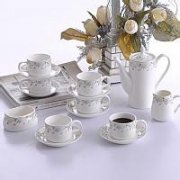Nestl é, which sells coffee, does medical treatment across the border.-it has accepted a company with dysphagia.
Nestl é, which is slowing down, is getting supplies from acquired medical companies and exploring new sources of growth. However, no matter how strong the development momentum of the nutrition business is, it has always been a sideline outside Nestle's food business, which does not represent its entry into the medical industry. The "real hammer" that really marks Nestl é's foray into medical health comes from actions in the field of skin health and medical beauty.
In 2014, Nestl é announced its foray into skin health care. This is a fast-growing industry that is more profitable than food, beverages and nutrition. The layout in this area starts with Nestl é's acquisition of dermatology drug company Gao Demi in 2014.
It turned out that L'Or é al and Nestl é had a joint venture called Gao Demei, each with a 50% stake. Since then, Nestl é traded its original 8% stake in L'Or é al for 50% of L'Or é al's shares, and then Gao Demei became a wholly owned subsidiary of Nestl é. It has the three major businesses of prescription drugs, self-medical department, cosmetology and plastic surgery. This acquisition not only marked Nestle's determination to enter the skin health industry, but also became one of the top 10 mergers and acquisitions in the world's pharmaceutical industry that year.
It is difficult to rise to fame quickly in a traditional industry. Nestl é, which has a history of 150 years, knows this better than anyone else. Therefore, its layout in the medical industry does not pursue one step in place, but step by step.
Nestl é bought a business owned by Novartis Pharmaceuticals for $2.5 billion in 2007 and has been expanding its healthcare footprint through mergers and acquisitions in the years that followed. At that time, the main focus was nutrition, and in 2011, Nestl é formally established a subsidiary around the business, Nestl é Health Technology.
It would be appropriate for Nestl é to start with nutrition. First, Nestl é itself gets rich from baby milk powder families, and its industry experience and sales channels are ready-made, so it does not need to spend too much effort on new business; second, nutrition regulation is much more relaxed than drugs, and it does not need to go through complex clinical trials to realize the new business.
The food giant tactfully positioned itself as the first stop in medical care, positioning itself in the market between food and medicine, and quickly saw the results.
As can be seen from the chart below, although Nestl é's main business is still powder and liquid beverages, accounting for about 20%, the proportion of nutrition and health technology business is increasing year by year, reaching 17% from about 14% in 2014 to the first half of 2016.

Important Notice :
前街咖啡 FrontStreet Coffee has moved to new addredd:
FrontStreet Coffee Address: 315,Donghua East Road,GuangZhou
Tel:020 38364473
- Prev

Hougu Coffee spends 70 million yuan to buy 100 mu of land and attaches importance to the European market.
In addition, because the Kunming Coffee Trading Center has been difficult to get government approval, Gu Coffee changed its position after June this year, and took the lead in establishing a coffee trading center in Chongqing and officially opened for business. High-profile announced to build China's largest coffee electronic trading platform, coffee (cross-border) e-commerce platform, coffee industry chain financing platform, as well as China Coffee Exchange settlement Center and Coffee big data
- Next

Yunnan Coffee Industry adds World Top Coffee Variety Rose Xia
Geisha, pronounced like a geisha in Japanese, is also called geisha coffee. Its species was discovered in the Rose Summer Forest of Ethiopia in 1931 and sent to the Coffee Research Institute in Kenya. It was introduced to Uganda and Tanzania in 1936, Costa Rica in 1953, and Panama from Francesca in the Dongba Seven Farm Garden in the 1970s. Mr. Serraxin is from Costa Rica.
Related
- Is espresso stored overnight in the refrigerator harmful to your body? Is frozen coffee better than freshly ground coffee?
- What parameters and proportions of water temperature should be used to grind and brew fresh coffee beans? Why can't I drink freshly roasted coffee right away?
- Customers have "changed" Manner's new products! Shop assistant: Please don't mess around!
- Remove sockets in customer areas at Starbucks stores?! Netizen: I won't go if I really tear it down
- What is the difference between the taste steps of sun-dried coffee and washed coffee? Why is sun-cured coffee sweeter and washed coffee sour?
- The recipe for salty grapefruit dirty is revealed! Coffee Festival salty grapefruit dirty coffee making materials parameters ratio milk share!
- How about the flavor of Sunlight 74158 at Sidamo Banshaha Mathieu Processing Factory in Ethiopia? 74158 Share the proportion of coffee brewing parameters!
- What effect does Italian American coffee with filter paper have? Will coffee taste better if it is put on filter paper at the bottom of the powder bowl?
- What is the color difference in coffee beans? What are the characteristics of honey processed coffee beans? Why are the anaerobically treated coffee beans uneven in color?
- How does novice Xiaobai quickly get started and make coffee? Newbies learn to make coffee by hand and share the specific steps and process process!

